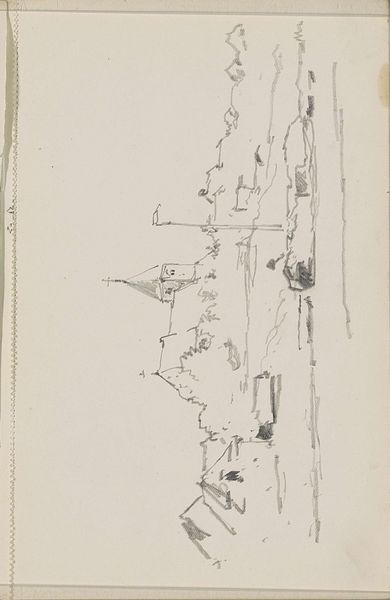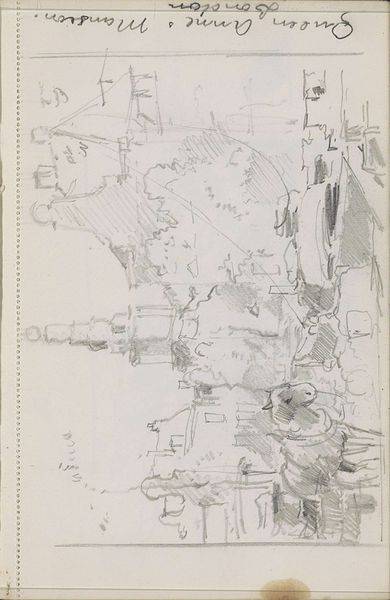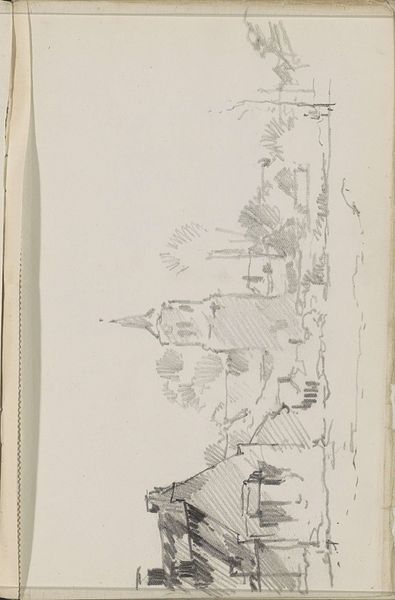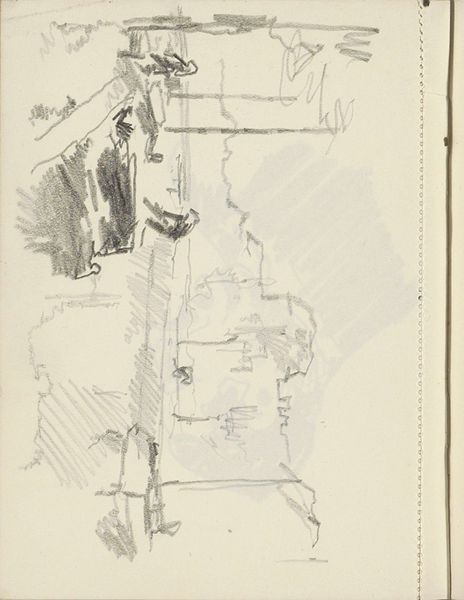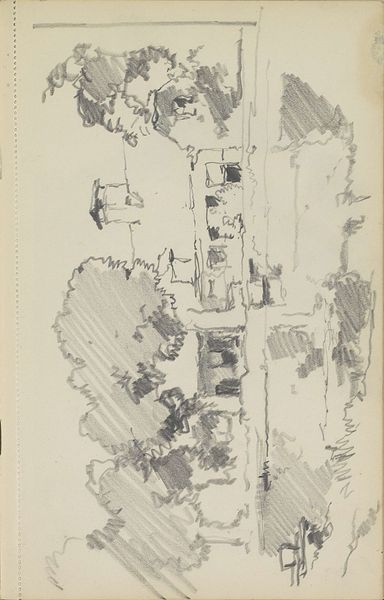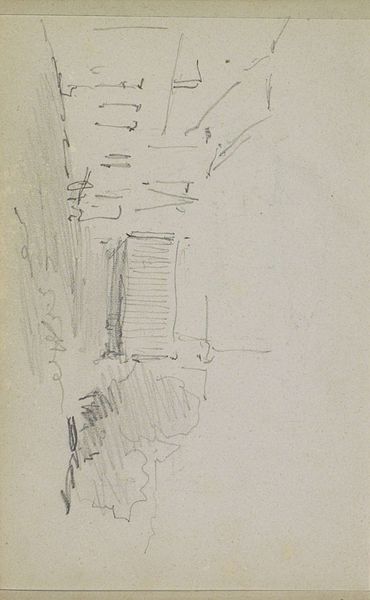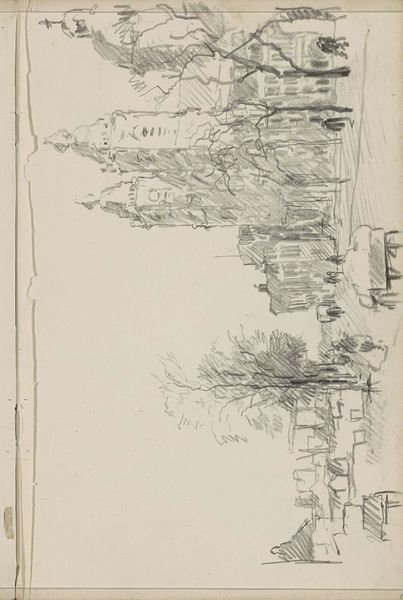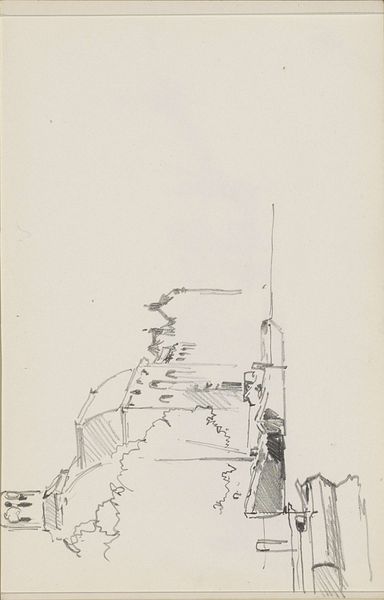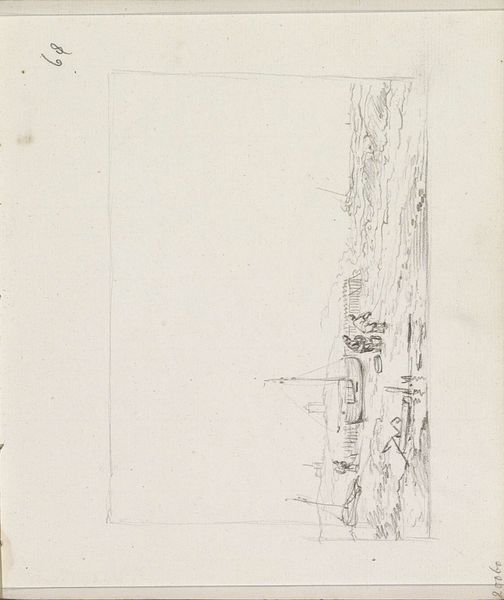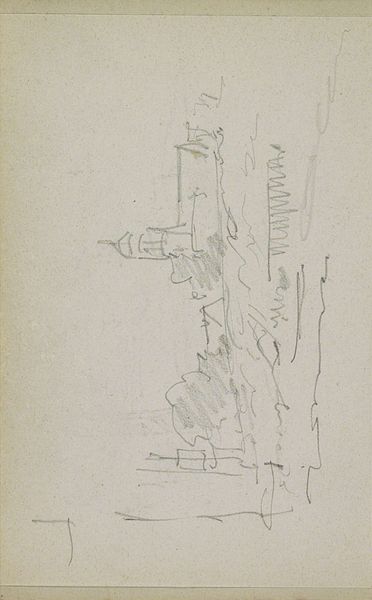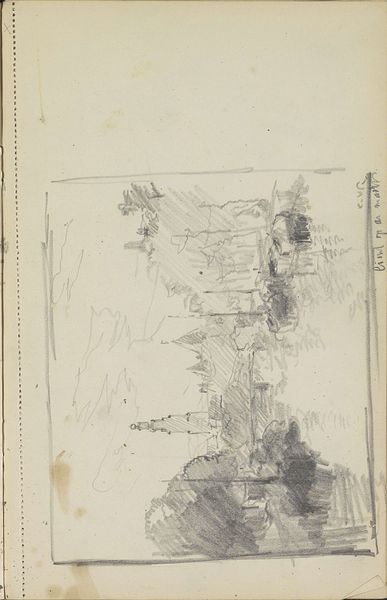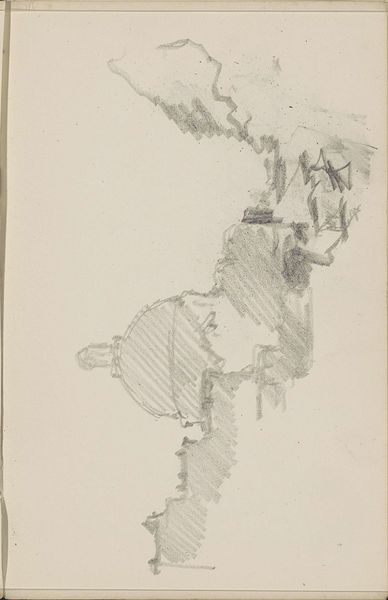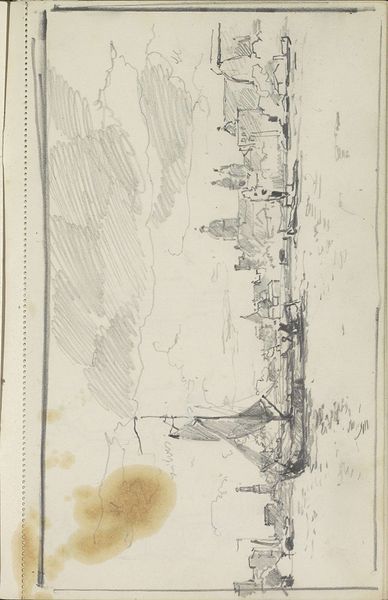
drawing, pencil
#
drawing
#
light pencil work
#
pen sketch
#
personal sketchbook
#
idea generation sketch
#
sketchwork
#
ink drawing experimentation
#
sketch
#
pen-ink sketch
#
pencil
#
sketchbook drawing
#
cityscape
#
storyboard and sketchbook work
#
realism
#
initial sketch
Copyright: Rijks Museum: Open Domain
Curator: Looking at this sketch, the first impression is… melancholy, perhaps? A quiet sense of urban solitude. Editor: Yes, there's a certain austerity to it. This is "Achtergevels van huizen aan de Warmoesstraat," or "Rear views of houses on the Warmoesstraat" by Cornelis Vreedenburgh, likely done sometime between 1890 and 1946. The artist uses pencil and ink, which seems appropriate for the understated nature of the subject. The sketch resides in the Rijksmuseum collection. Curator: The repeated vertical lines suggest resilience. I find myself wondering about the stories held within those unseen facades. Are these places of labor, or are they private sanctuaries? What collective memories are woven into this narrow streetscape? Editor: That's where its potential lies, I think, not just as architecture but as a testament to a lived reality that needs unearthing. The Warmoesstraat itself is located in Amsterdam's old city center; a working-class neighborhood in its day, shadowed by the burgeoning commercial spirit of the time. Curator: And it’s also one of the oldest streets in the city. To me, the quick sketch suggests the ephemeral nature of even the seemingly permanent. It reminds us of mortality. A tangible link to the past captured with very few marks. The perspective, though slightly off, does not take away from the emotional weight, even gives the scene an honest authenticity. Editor: Agreed, and I’d like to add that historically these kinds of everyday spaces in art, ones depicting marginalized communities and the unseen labor force—these are often overlooked or considered insignificant, even if they were the norm of experience in the world's expanding urban environments at this time. They often get swept aside to serve a mythologized narrative that perpetuates power structures through art. Curator: It is fascinating how such a simple study of architecture speaks to complex social issues and speaks volumes about individual perspective. This sketch offers insight into urban life and cultural memory. Editor: Yes, an otherwise common site is preserved with intentional strokes to challenge viewers. The seemingly mundane offers a peek at class dynamics and architectural storytelling embedded in the artwork. Curator: Thank you for helping me reflect. It enriches how I view the artist’s intimate reflection. Editor: And you reminded me that the soul and symbol-laden image must have more cultural impact. It's so important to view art that is rooted in real-life experience as we learn to explore.
Comments
No comments
Be the first to comment and join the conversation on the ultimate creative platform.
